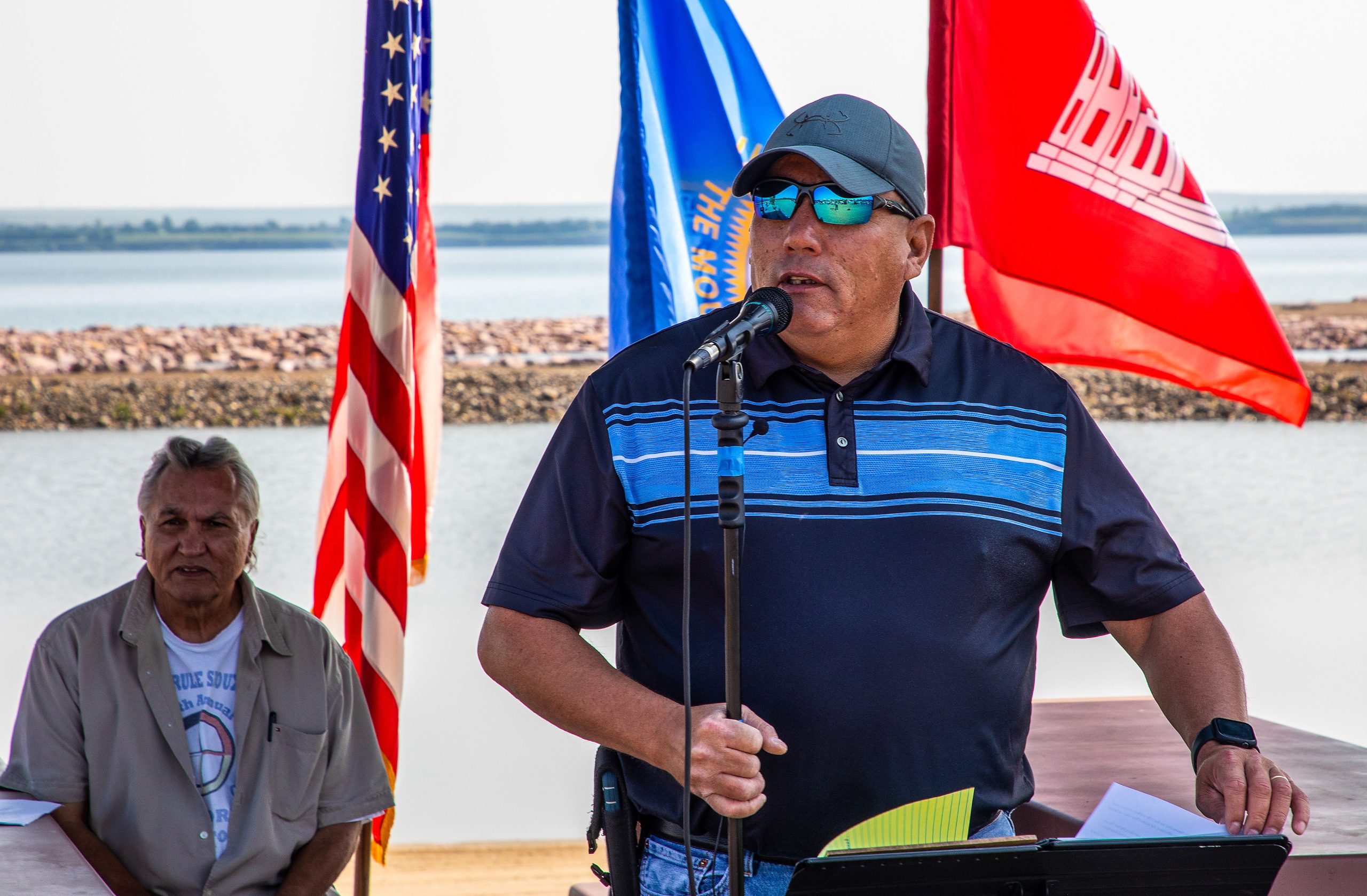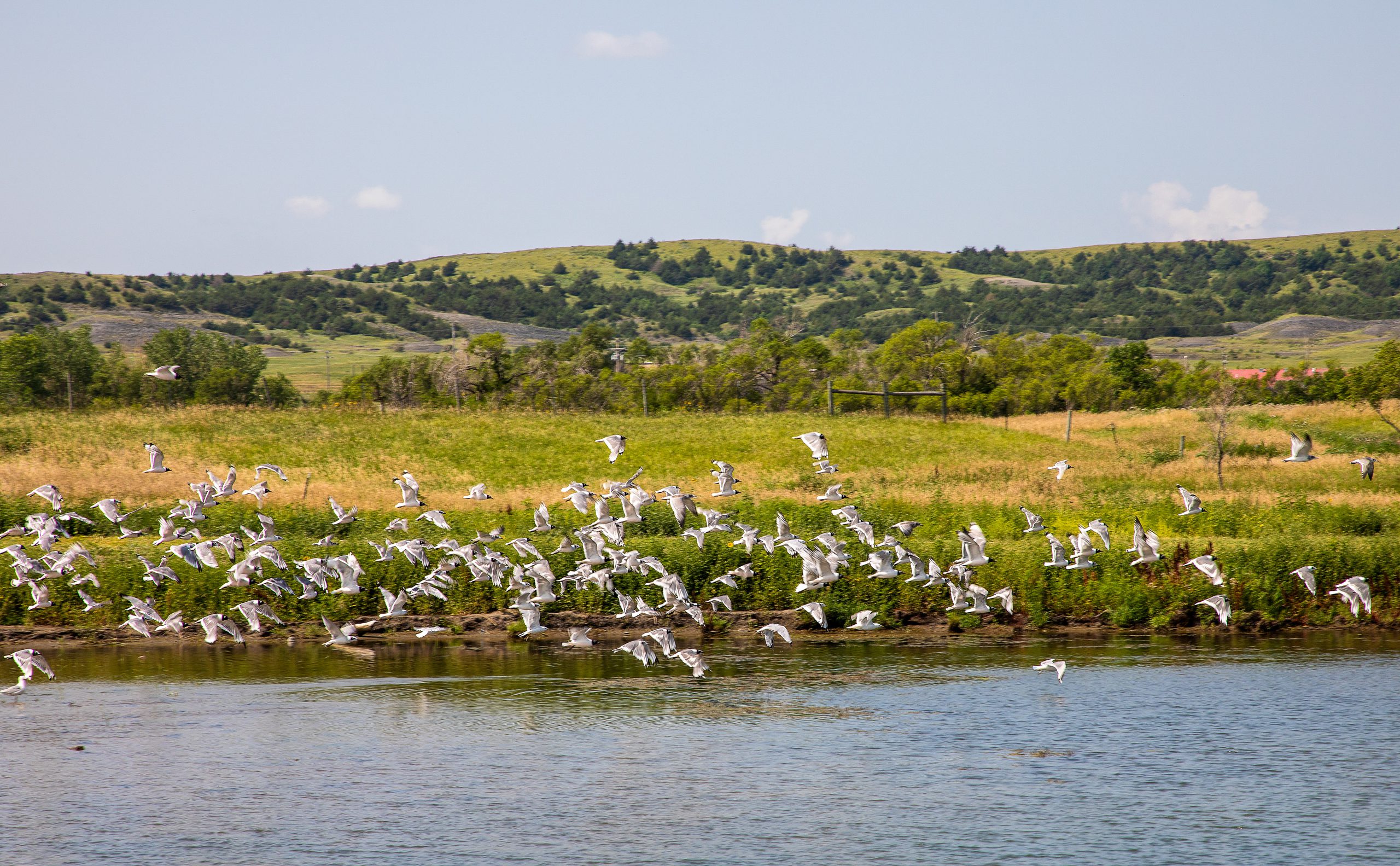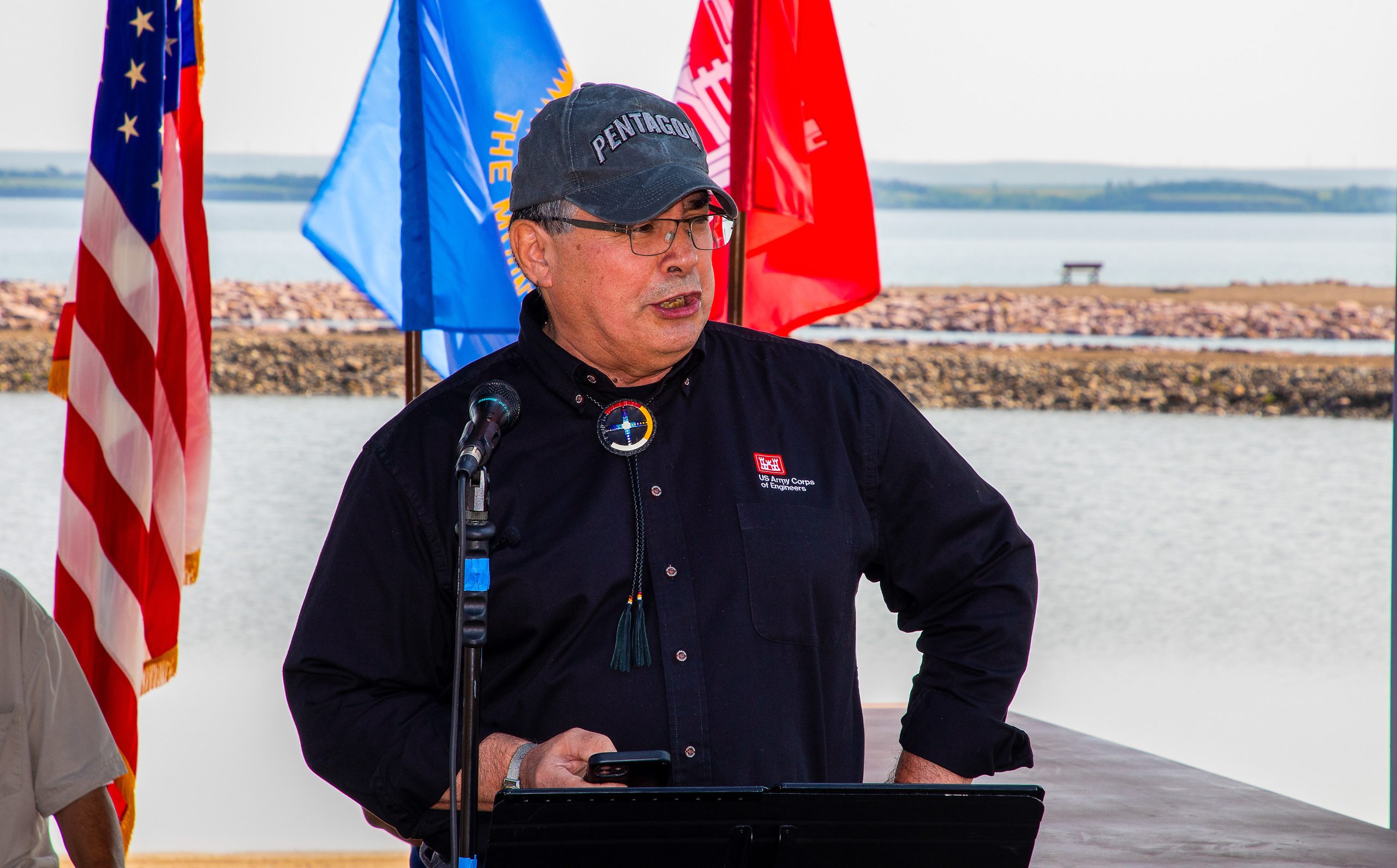Indianz.Com > News > DVIDS: Lower Brule Sioux Tribe protects homelands from climate change

Omaha District completes first construction project under Tribal Partnership Program
Wednesday, August 16, 2023
U.S. Army Corps of Engineers, Omaha District
DOD DVIDS
The U.S. Army Corps of Engineers, Omaha District recently completed an $11.6 million project in partnership with the Lower Brule Sioux Tribe to address erosion of shoreline banks in Lower Brule, South Dakota.
Ice and wave action from Lake Sharpe has steadily eroded LBST land since the Fort Randall and Big Bend Dams became operational in 1956 and 1966. Prior studies have shown that the shoreline along the project area was eroding at a pace of approximately 13 feet per year resulting in more than 500 acres of lost land. As a result, environmental habitats were degraded and wastewater sewage lagoons that service the LBST were threatened.
“The whole part of this project to really remember and think about is protecting the shoreline – to protect the land here now,” said LBST Chairman Clyde Estes during a ceremony July 21 to mark the completion of the project and opening of the Wata Onazin Recreation Area. “This is a very, very important project and is just one of many that we’re trying to keep pushing forward to stabilize our shoreline to protect the erosion of our Tribal homelands.”



Jaime Pinkham, Secretary of the Army for Civil Works principal deputy assistant , provides remarks during a ceremony July 21, 2023, in Lower Brule, South Dakota. The ceremony was held to mark the completion of the Lower Brule Sioux Tribe natural resources preservation and ecosystem restoration Tribal Partnership Program project by the U.S. Army Corps of Engineers, Omaha District. (U.S. Army photo by Delanie Stafford)
DVIDS (Defense Video Imagery Distribution System) is a state-of-the-art, 24/7 operation that provides a timely, accurate and reliable connection between the media around the world and the military serving worldwide. This article is in the public domain.
Search
Filed Under
Tags
More Headlines
Schedule of Senate committee hearings for Donald Trump nominees
‘Governor Burgum will serve Indian Country well’: Senate committees busy with Donald Trump’s nominees
NAFOA: 5 Things You Need to Know this Week
Chuck Hoskin: Cherokee Nation sees bright future for language programs
Native America Calling: Native in the Spotlight with Ted Nolan
Neal McCaleb, prominent citizen of Chickasaw Nation, passes on after storied career
South Dakota Searchlight: Tribes seek protection for Wounded Knee Massacre site
Arizona Mirror: Tribes receive climate resilience grants
Native America Calling: Native skiers
Alaska Beacon: Republicans still pushing to drill in Arctic National Wildlife Refuge
Iowa Capital Dispatch: Democrats object to hearing for Trump’s Interior nominee
North Dakota Monitor: Tribes share priorities with state lawmakers
Cronkite News: Indigenous Enterprise brings culture to New York City
Native America Calling: Combating a Native American housing crisis
Senate committees schedule slew of confirmation hearings for Donald Trump nominees
More Headlines
‘Governor Burgum will serve Indian Country well’: Senate committees busy with Donald Trump’s nominees
NAFOA: 5 Things You Need to Know this Week
Chuck Hoskin: Cherokee Nation sees bright future for language programs
Native America Calling: Native in the Spotlight with Ted Nolan
Neal McCaleb, prominent citizen of Chickasaw Nation, passes on after storied career
South Dakota Searchlight: Tribes seek protection for Wounded Knee Massacre site
Arizona Mirror: Tribes receive climate resilience grants
Native America Calling: Native skiers
Alaska Beacon: Republicans still pushing to drill in Arctic National Wildlife Refuge
Iowa Capital Dispatch: Democrats object to hearing for Trump’s Interior nominee
North Dakota Monitor: Tribes share priorities with state lawmakers
Cronkite News: Indigenous Enterprise brings culture to New York City
Native America Calling: Combating a Native American housing crisis
Senate committees schedule slew of confirmation hearings for Donald Trump nominees
More Headlines
